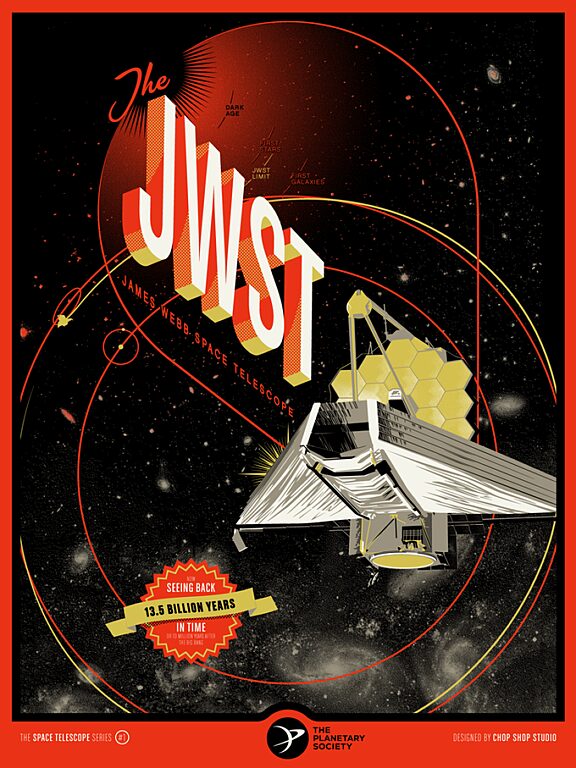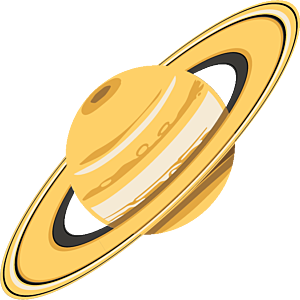The Downlink • Jul 22, 2022
A space smorgasbord
Space Snapshot

These images of Jupiter were taken by NASA’s JWST spacecraft’s near-infrared camera (NIRCam) instrument as a test of the telescope’s ability to image and track bright, fast-moving objects within our Solar System. The results were even better than expected, with Jupiter’s moons and rings clearly visible in the images. Pictured: On the left is an image taken using a narrower wavelength filter 2.12 micron filter, and on the right using a 3.23 micron filter. Image credit: NASA, ESA, CSA, and B. Holler and J. Stansberry (STScI).
You love space, now take action
This weekly newsletter is your toolkit to learn more about space, share information with your friends and family, and take direct action to support exploration. Anyone can subscribe at planetary.org/connect to receive it as a weekly email.
Mission Briefings


The United Arab Emirates’ Hope mission captured a spectacular new photo of Mars. The spacecraft sent back the raw data in February 2022, which amateur image processor Jason Major used to create this image. You can see the enormous Valles Marineris canyon system near the center, and ice fields on each pole. Image credit: Emirates Mars Mission / EXI / Jason Major.

NASA is delaying the launch of its VIPER lunar mission by a year. The Volatiles Investigating Polar Exploration Rover (VIPER) rover is designed to land in the south polar regions of the Moon to look for water ice. It is now scheduled for a November 2024 launch, giving the agency more time to test its commercial lander.

NASA’s Ingenuity Mars helicopter should fly again in August. As dust storms subside on Mars, the spacecraft is expected to be able to recharge its solar-powered batteries enough to get into the air again in the next few weeks.
From The Planetary Society


When India started its planetary exploration program, it did it right. The Chandrayaan-1 spacecraft was India’s first mission to another world, which entered into orbit around the Moon in 2008. The mission was a big success all around, finding evidence of large amounts of water ice on the lunar poles. Pictured: Three images of the same lunar crater taken with Chandrayaan-1’s Moon Mineralogical Mapper instrument, a NASA contribution that was used to differentiate between ice, liquid water, and water vapor based on how the lunar surface reflected and absorbed infrared light. Image credit: ISRO et al.

Come for the lunar radar research ideas, stay for the stories. This week’s Planetary Radio features a conversation with former director of NASA’s Planetary Science division and retired chief scientist Jim Green, who shares fascinating ideas from a recent workshop that explored the potential of radio telescopes on the Moon’s farside. He also shares anecdotes from his long history of space science and NASA service.

The end of an era marks the beginning of a new one. Planetary Radio’s longtime host and producer Mat Kaplan has announced his plans to retire this year after 20 years of sharing space science and exploration with his listeners. As we celebrate Mat’s many accomplishments throughout his career, we also look forward to the next chapter: we are now seeking applicants for the position of Planetary Radio host and producer.
Want a JWST poster for your walls? You can make it happen.

The Planetary Society’s longtime partner ChopShop makes all the awesome merch in our online store, and they’re working on a new series of posters featuring space telescopes, including JWST. To get this series off the ground ChopShop has launched a Kickstarter campaign. Backers can get first access to the poster, as well as other rewards.
Wow of the Week

If you’ve never seen the movie Contact, now is the time. The film, based on a screenplay written by Ann Druyan and Planetary Society co-founder Carl Sagan, just celebrated the 25th anniversary of its release. This story of a scientist’s discovery of signals from another world remains one of the most iconic science fiction movies of all time (at least, in our biased opinions). Planetary Society Chief Advocate Casey Dreier explains why Contact is worth the watch, whether it’s your first time or hundredth time seeing it. Pictured: A still from the movie showing the character Dr. Ellie Arroway, portrayed by Jodie Foster and based on real SETI researcher Jill Tarter. Image credit: Warner Bros.
Send us your artwork!
We love to feature space artwork in the Downlink. If you create any kind of space-related art, we invite you to send it to us by replying to any Downlink email or writing to [email protected]. Please let us know in your email if you’re a Planetary Society member!


 Explore Worlds
Explore Worlds Find Life
Find Life Defend Earth
Defend Earth



